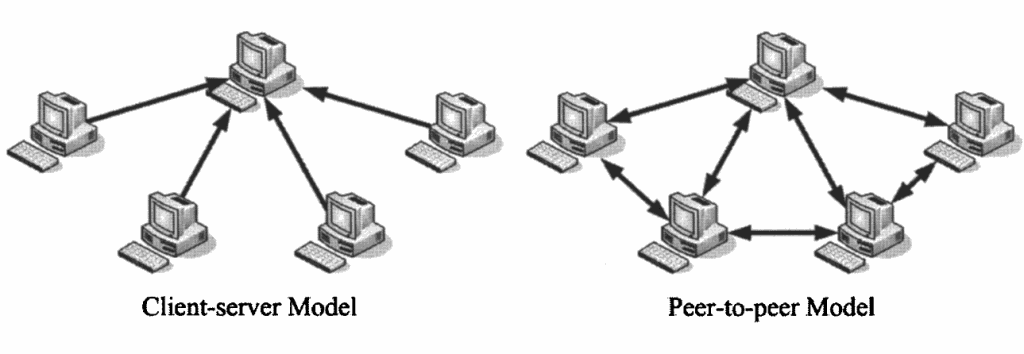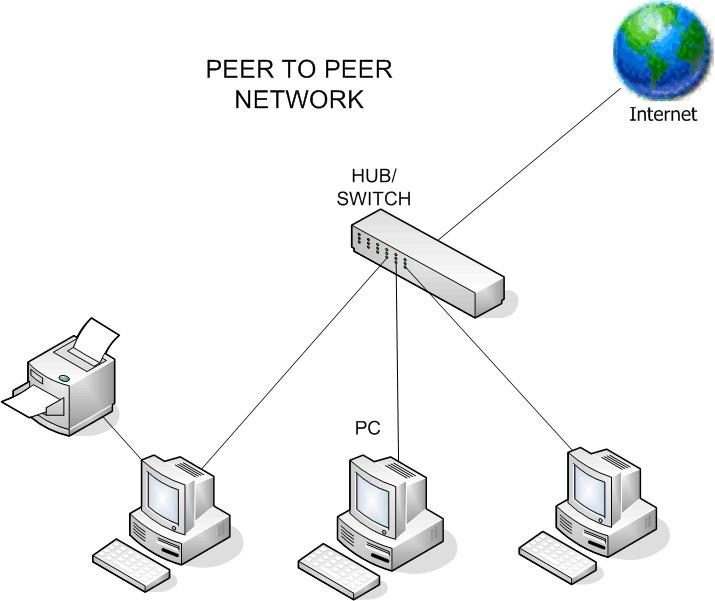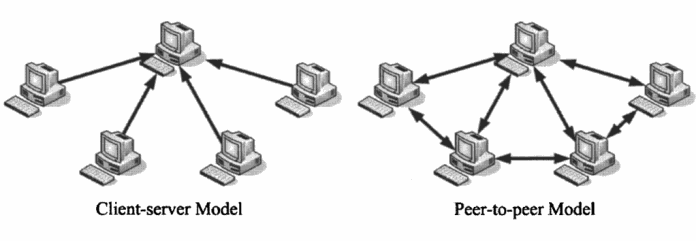P2P is one of the core technologies of many cryptocurrencies. In today’s article, we will learn what P2P Network is, how it works, and its application & advantages and disadvantages of P2P network.
What is P2P Network?
P2P (Peer to Peer) Network is a network of devices that share and store files. Each participant (node) acts as an individual peer. Usually, all nodes have the same power and perform the same tasks.
Other names of P2P: peer-to-peer network

How Peer-to-Peer Network Works

In essence, a distributed network of users maintains the Peer to Peer network. This network structure typically has no central administrator or server, as each node stores a copy of the files and acts as a client server for the other nodes.
Therefore, each node can download files from other nodes or upload files to other nodes. This is the difference between peer-to-peer networks and traditional client-server systems.
On a P2P network, connected devices share files stored on their hard drives. Using software applications designed to mediate data sharing, users can query other devices on the network to find and download files. Once a user has downloaded a file, they can act as the source of that file.
In other words, when a node acts as a client, they download files from other nodes on the network. But when they work as a server, they are the source from which other nodes can download files. However, nodes can perform two functions simultaneously (e.g., download file A and upload file B).
P2P peer-to-peer network models
We can classify peer-to-peer systems according to three main architectural styles unstructured, structured, and hybrid peer-to-peer networks.
Unstructured peer-to-peer network

Nodes on an unstructured Peer to Peer network will not be organized in any particular structure. Participants randomly communicate with each other. These systems are considered to be strongly resistant to user abandonment activities (where some nodes frequently join and leave the network).
Although easier to build, unstructured Peer to Peer networks may require higher CPU and memory usage, as search queries are sent to the highest number of peers possible. This tends to flood the network with questions, especially if only a few nodes provide the desired content.
Structured peer-to-peer network

In contrast, nodes on a P2P network have an organized architecture that allows nodes to efficiently search for files, even when the content is not widely available. In most cases, this is achieved through hash functions that will enable database lookups.
While structured networks can be more efficient, they often exhibit higher centralization, requiring higher system setup and maintenance costs. In addition, networks are less robust when faced with high user abandonment rates.
Hybrid peer-to-peer network

Hybrid P2P networks combine traditional client-server architecture with some aspects of peer-to-peer architecture.
For example, this network may design a central server to create connections between peer computers in the network.
Compared to the other two architectures, hybrid models often exhibit higher performance. They combine the main advantages of each method, providing a significant degree of efficiency and decentralization.
Advantages and disadvantages of peer-to-peer networks
Advantages
The structure of a Peer to Peer network is maintained by its users, who can both provide and consume resources. There is no such thing as a central server or storage server, which makes P2P systems very different from traditional client-server models, where data is distributed one way (from a centralized server). centered on its clients); because of this structure, P2P networks offer the following advantages to users:
Peer to Peer networking does not require a network operating system.
There is no need for an expensive server, as individual workstations are used to access the data files.
No need for specialized staff like network technicians.
Much easier to set up than a client-server network and doesn’t require much-specialized knowledge.
If one computer fails, it won’t disrupt any other part of the network. It just means those files are not available to other users then.
Disadvantages
Despite the above advantages, P2P networks also have their disadvantages:
Since others can access each computer, it can slow down the user’s performance.
Files and folders cannot be backed up centrally.
Files and resources are not centrally organized in a particular “shared area”. They are stored on individual computers and can be challenging to identify if the computer owner does not have a proper storage system.
If a virus enters the network, many users will be affected. Ensuring that viruses are not introduced into the network is the responsibility of each individual user.
The resources will disappear because the node providing the help is disconnected anytime.
Application of P2P network in Blockchain
P2P architectures can be suitable for many different use cases. Today, P2P networks are the core of most cryptocurrencies, making up a large part of the blockchain industry.
However, they are also exploited in other distributed computing applications, including web search engines, streaming platforms, online marketplaces, IPFS, and more.
Summary
Thus, we have learned what P2P Network is, how it works, as well as applications & advantages and disadvantages of P2P networks in Blockchain.


